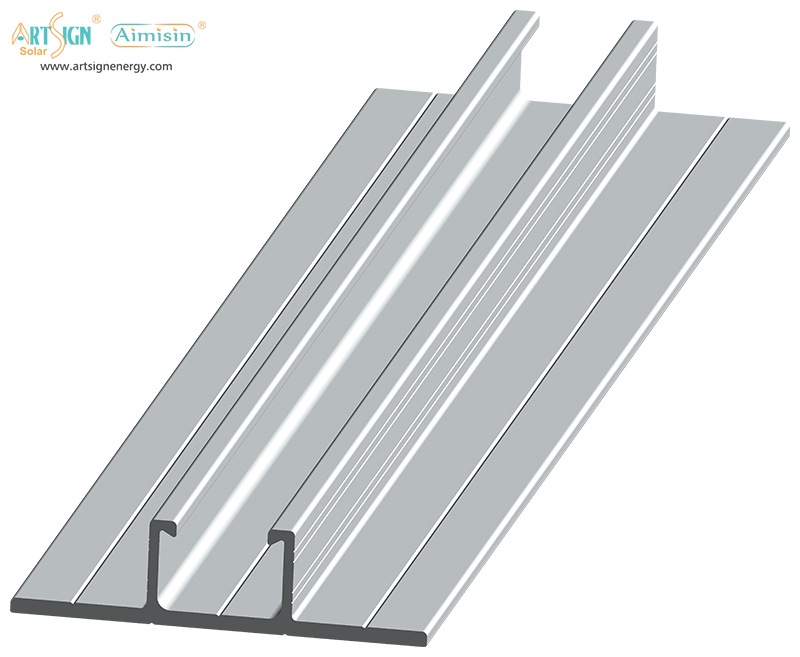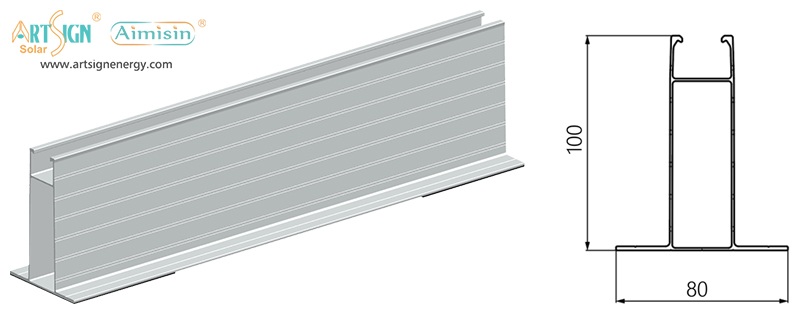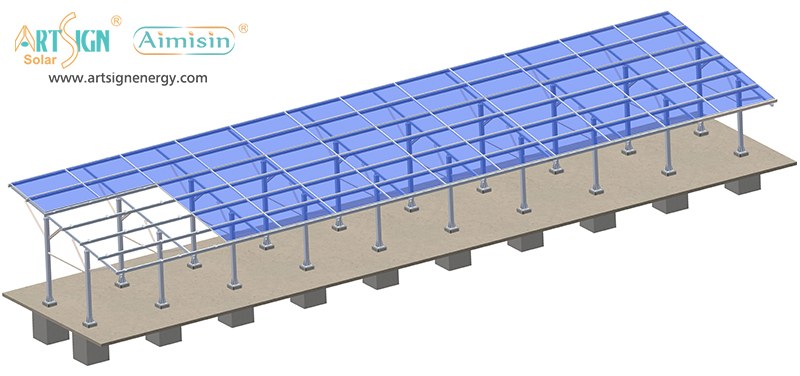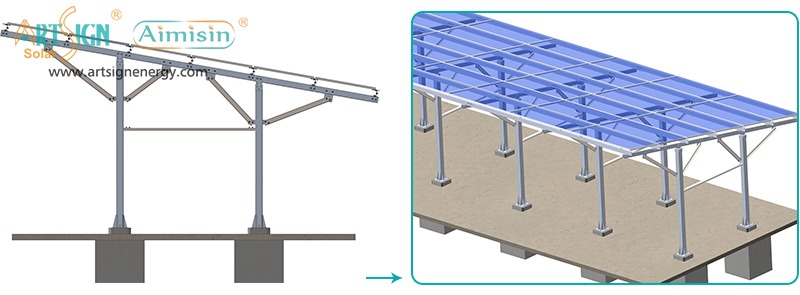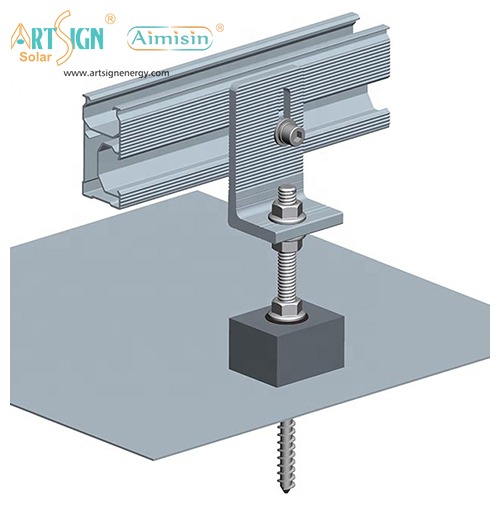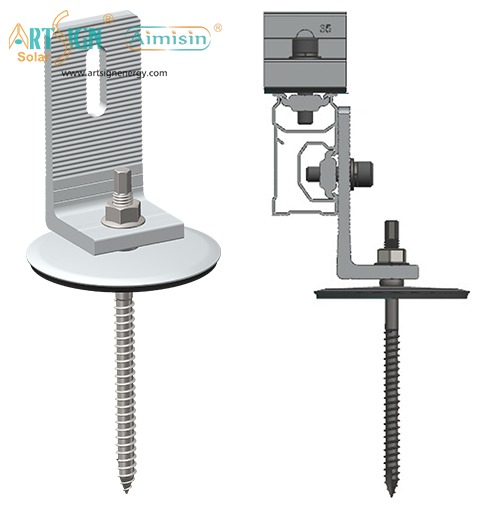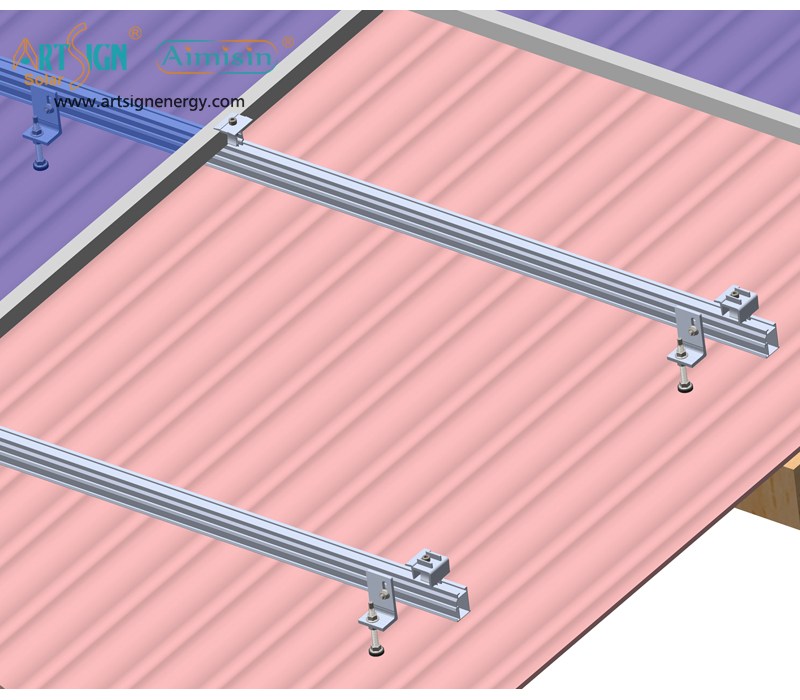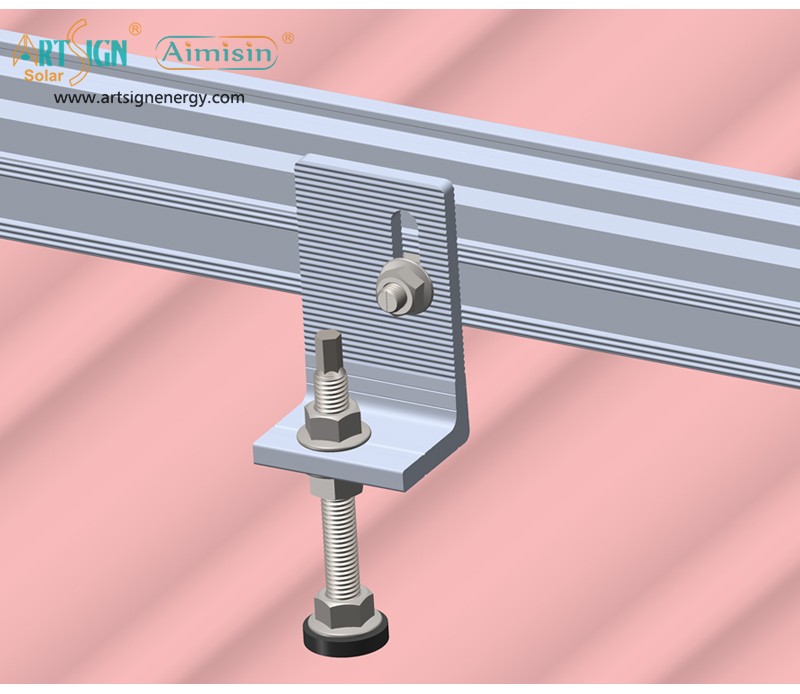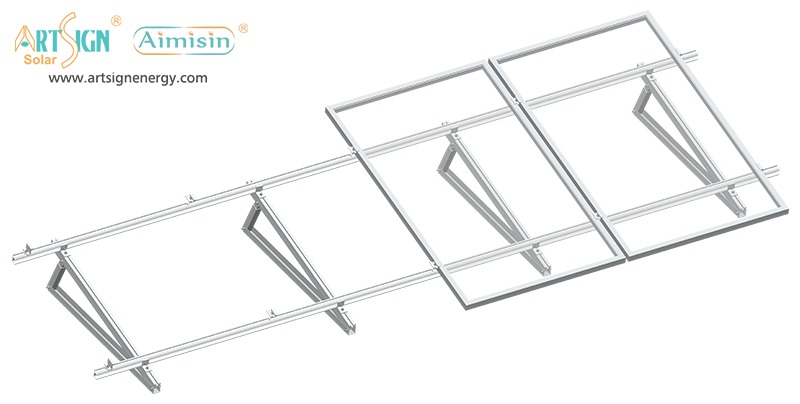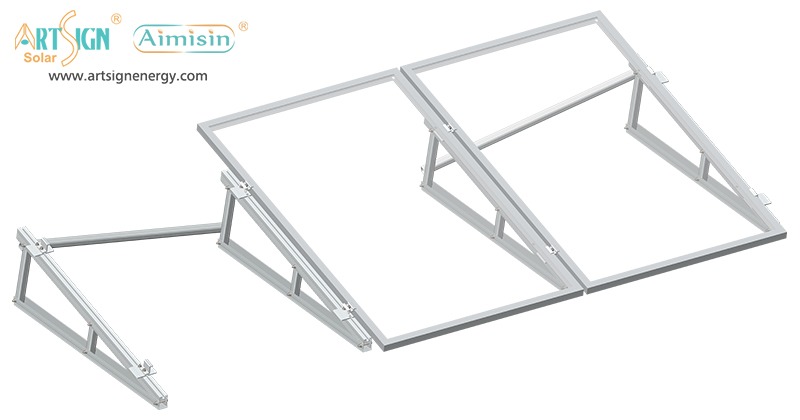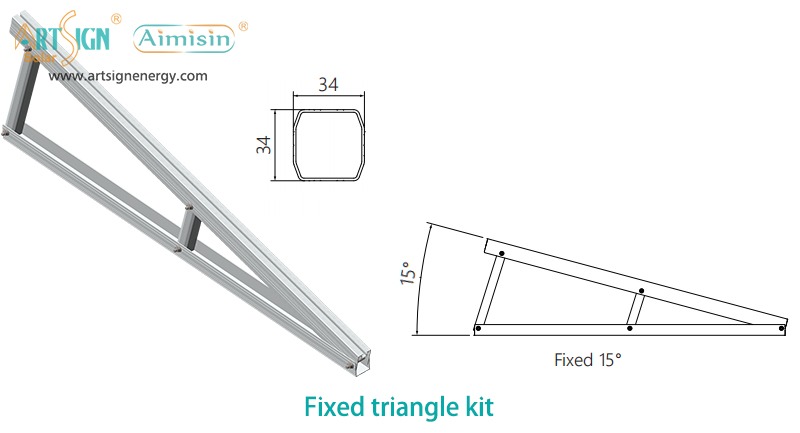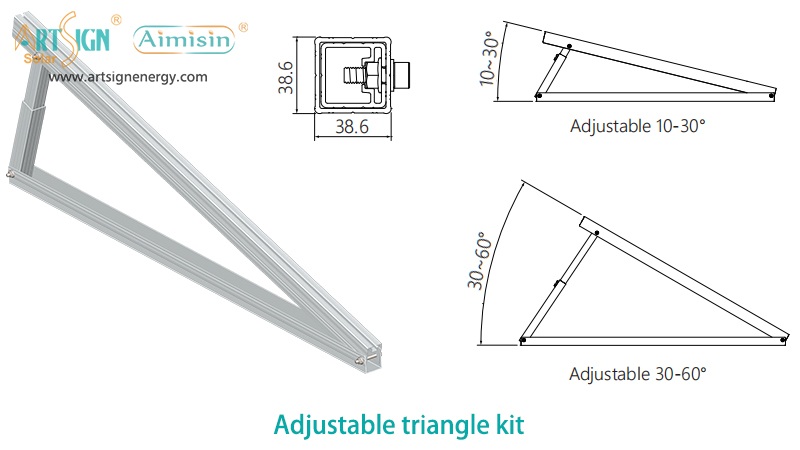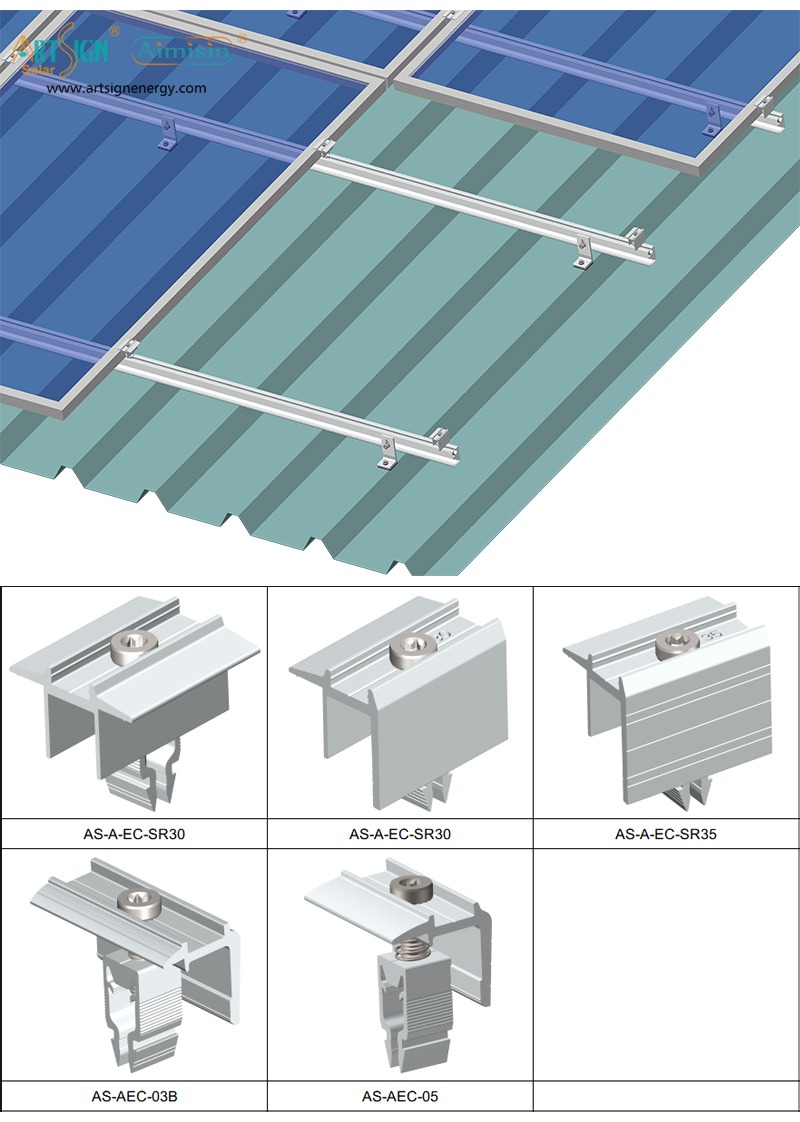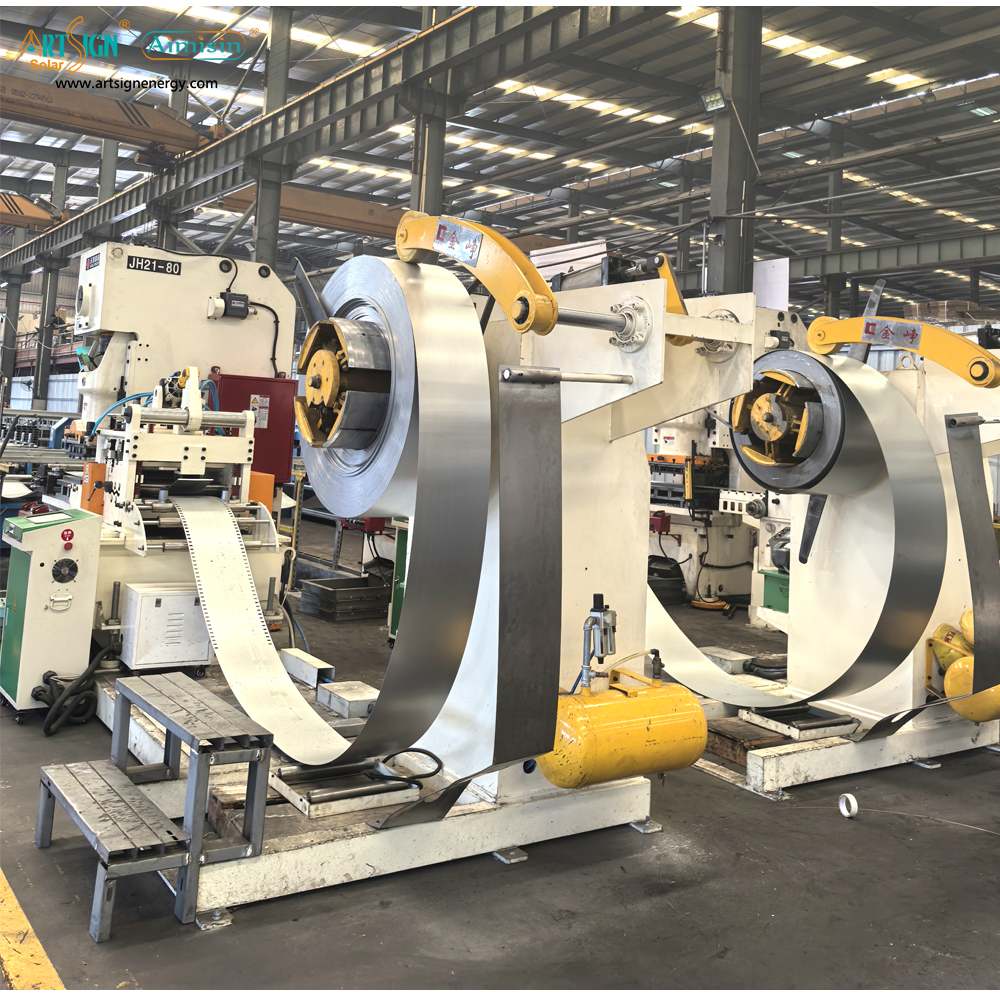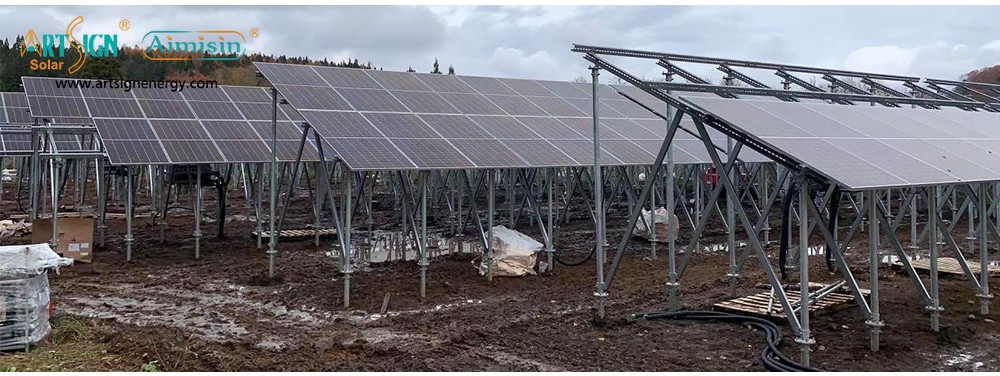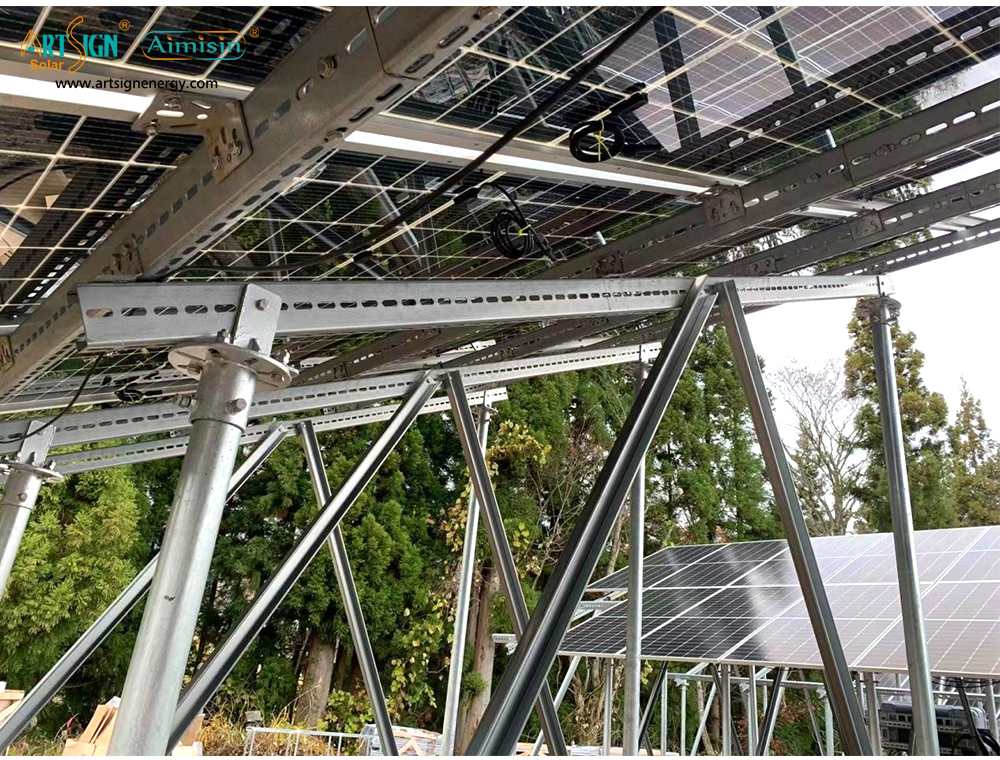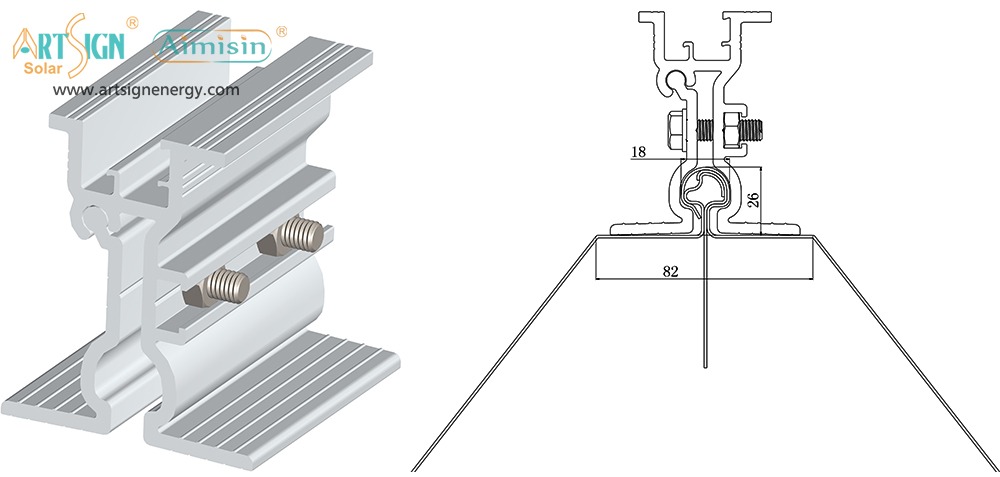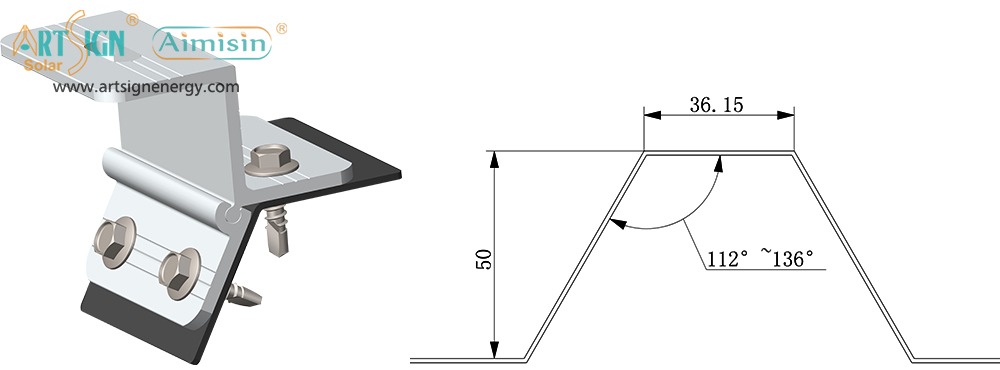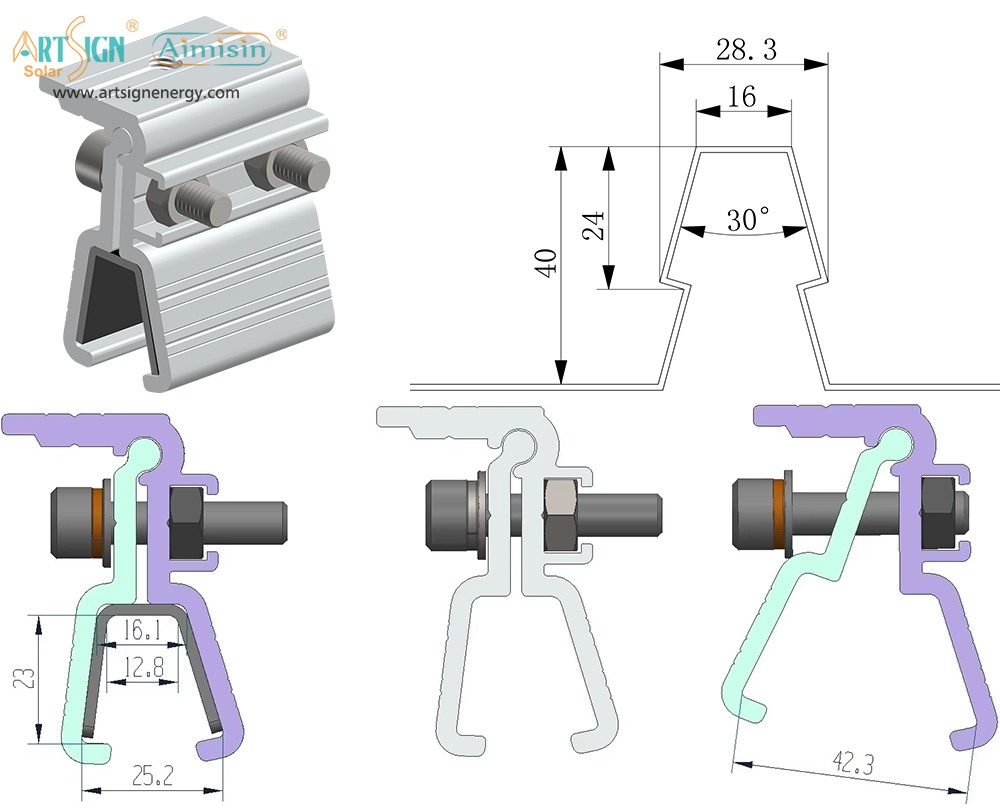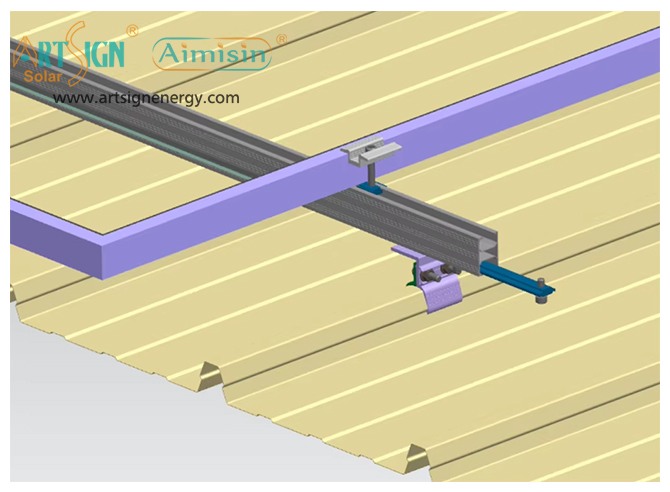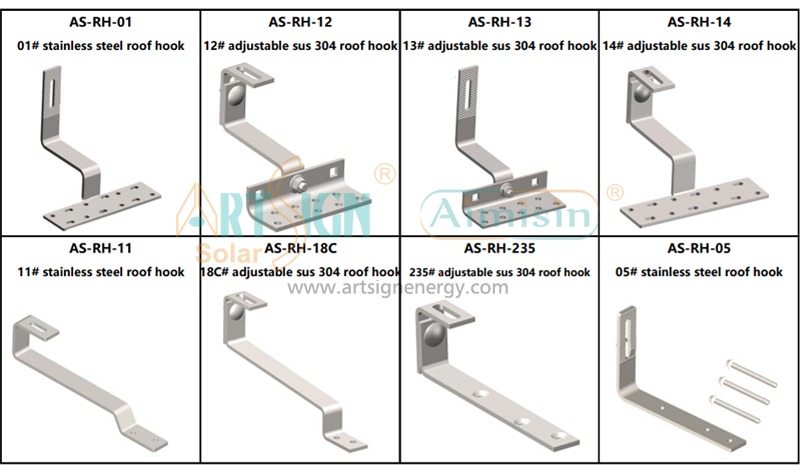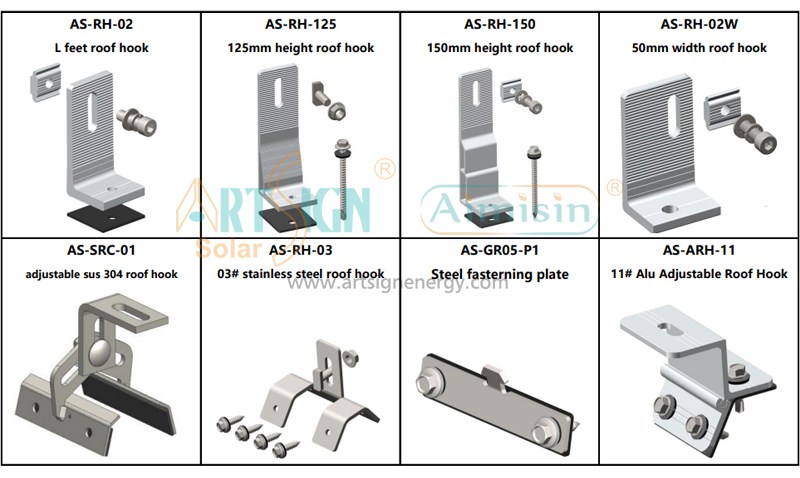When it comes to installing solar panels, selecting the right mounting system for your roof is crucial. Different roof structures require specific solutions to ensure durability, efficiency, and cost-effectiveness. At Art Sign, a solar mounting system manufacturer established in 2006, we specialize in providing high-quality rooftop and ground-mounted solar structures. Here, we recommend four tailored mounting systems for different roof types to help you make the best choice for your solar installation.
Tile roofs often require specialized solutions due to their delicate structure. Stainless steel hooks are an ideal option for this type of roof. These hooks are designed to securely anchor solar panels without damaging the tiles, ensuring a reliable and long-lasting installation.
Product code: 20 # roof hook
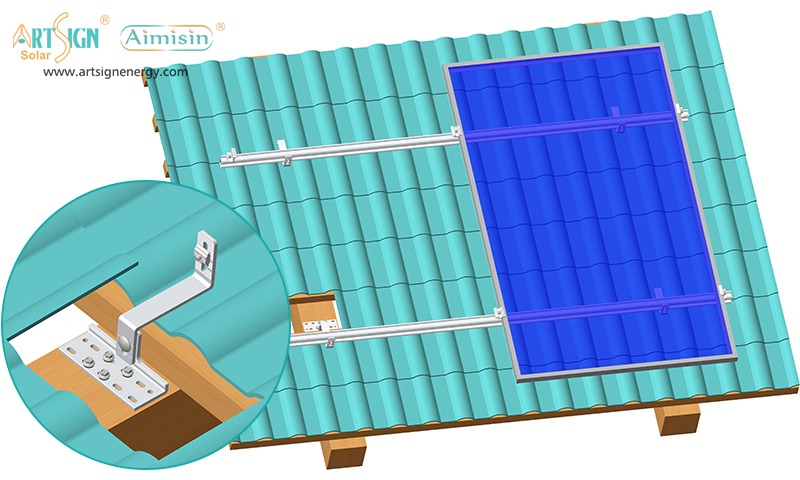
2.Aluminum or Stainless Steel Clamps for Metal Roofs
Metal roofs come in various designs, and choosing the right clamps is essential. Aluminum or stainless steel clamps are versatile and can be customized to fit different metal roof structures. Whether your roof is standing seam or corrugated, these clamps offer a secure and adaptable solution.
Product code: 31# aluminum roof clip
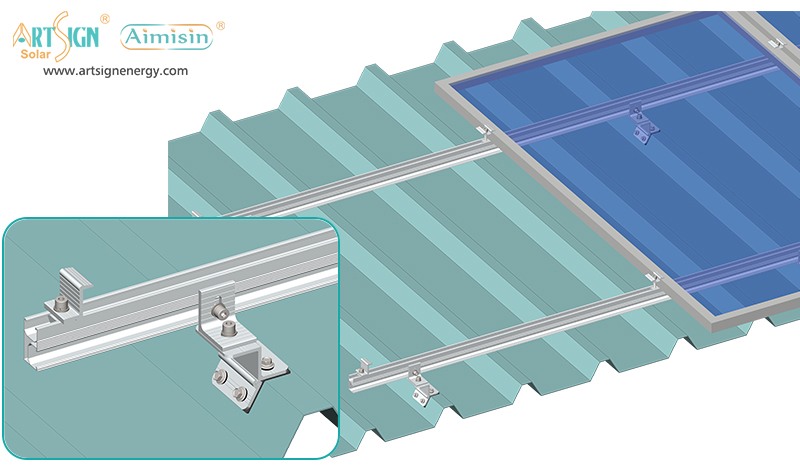
3.Mini Rails for Trapezoidal Metal Roofs
For trapezoidal metal roofs, solar structure mini rails are a lightweight and cost-effective option. These rails are easy to transport and install, making them perfect for areas with lower wind loads. Their streamlined design reduces material costs while maintaining structural integrity.
Product code: XR06 , XR07 Mini rail
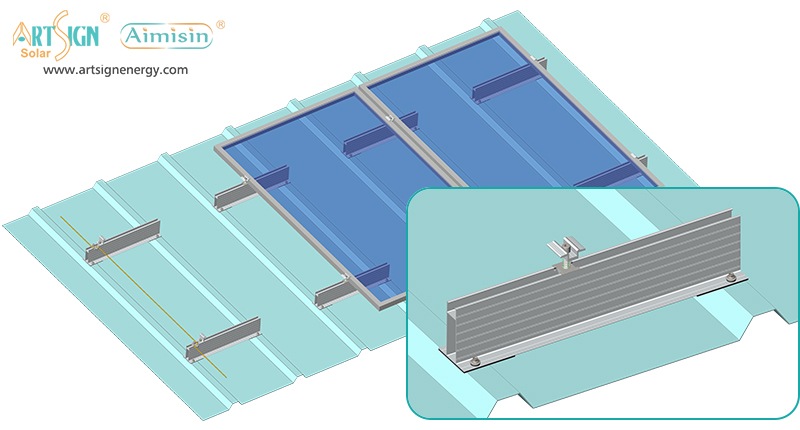
4.L-Foot Hooks for Versatile Applications
If you're looking for a universal solution, PV mounting L brackets are your best bet. These hooks are highly adaptable and can be used on tile roofs, metal roofs, and even wavy or corrugated roofs. Paired with the appropriate solar mounting accessories, they offer excellent value for money and wide applicability.
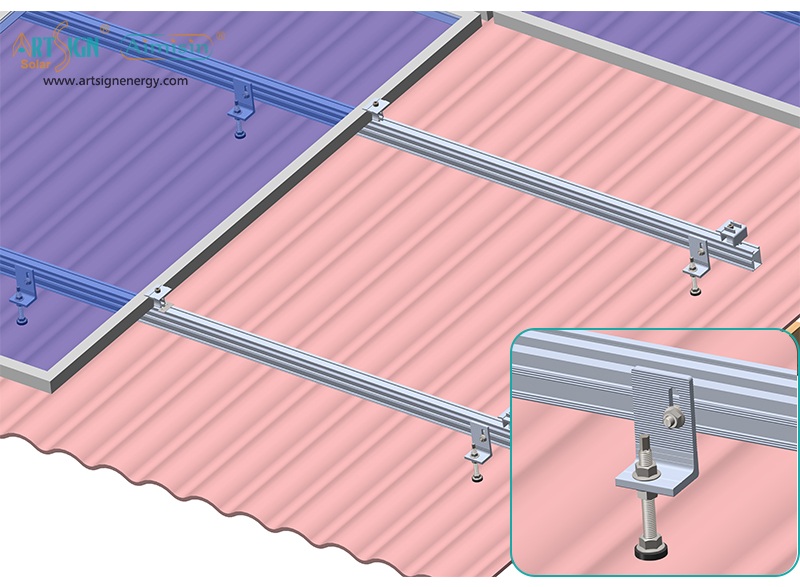
At Art Sign, we pride ourselves on offering solar mounting systems that cater to diverse roofing needs. Whether you’re installing on a residential tile roof or a commercial metal roof, our range of products ensures a reliable and efficient solar racking .
Choosing the right mounting system not only enhances the performance of your solar panels but also ensures the longevity of your installation. If you have any questions or need customized solutions, feel free to reach out to us!
